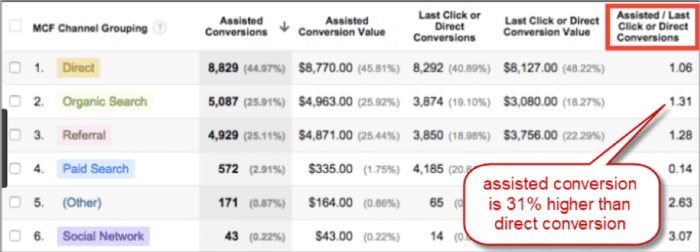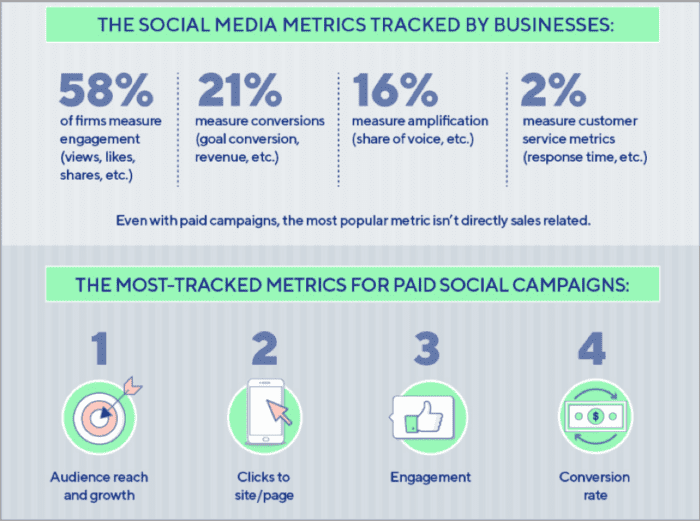To earn the respect of your executive team, you need to speak their language – and this means ROI. Here’s how to calculate these ROIs for your customer acquisition efforts
ROI is the KPI your executives care most about. When it comes to speaking the language of C-level executives, return on investment (ROI) is the Super-KPI that matters most. Other metrics commonly used by acquisition marketers — such as cost per acquisition, conversion rate and engagement — while useful, don’t fully account for both sides of the ROI equation.
In this post, I first define how to calculate Marketing ROI. Then I share how to arrive at valid revenue and cost estimates for three top customer acquisition channels: SEO, PPC, and content marketing.
How to calculate Marketing ROI
The Harvard Business Review, in its 2017 ‘Refresher on Marketing ROI’ article, provides this definition of Marketing Return On Investment (MROI):

Obviously, increasing your MROI is all about either increasing you incremental revenues (most commonly, Monthly Recurring Revenues, or MRR) or reducing the expenditures (most commonly, marketing and support costs) required to achieve these revenue gains.
If you can succeed with this, you’ll shift your leadership team’s mindset from a focus on cost (which our brains associate with pain) to a focus on investment (which our brains associate with gains).
Here are the ROI calculators for each of your acquisition marketing channels that you’ll need to achieve this strategic shift.
Acquisition-related ROI Calculators
When it comes to acquisition, most ‘small-b brand’ digital companies (not recognized on a global level) mostly rely on SEO (organic) traffic and PPC (paid) channels to drive traffic to their sales pages, so I’ll start with those ROI calculations.
PPC ROI calculators
Two commonly-used metrics for PPC campaigns are return on ad spend (ROAS) and profit per impression/click (PPI/PPC). After defining each, I’ll explain why they are not the best measures of PPC campaign performance.
Return on Ad Spend (ROAS)
ROAS is simply PPC Revenue minus PPC Cost, divided by PPC Cost, usually shown as a percentage. For example, if your sales from a PPC campaign are $1,500, and you paid $500 for PPC clicks, your ROAS would be 2.0, or 200%.
Marketing vendor HubSpot provides a more robust ROAS calculator based on data including Monthly Ad Budget, Expected CPC, Target Conversion Rate, Average Sales Price and Lead-to-Customer Rate.
Profits per impression / click (PPI / PPC)
The ‘profit per’ metrics takes a holistic view of the acquisition and conversion process. Conversions don’t happen on their own; they require the right keywords, creating effective ads, and getting clicks at a reasonable cost.
The Profit per Impression/Click calculation is a bit more involved. You’ll need impressions, clicks, total cost and total sales value. To calculate profit per impression, divide profit by impressions. For profit per click, divide profit by clicks.
The problem with ROAS and PPI/PPC
While ROAS and PPI/PPC are a good (and easy) place to start, they’re not accurate ROI measurements. Why?
Because PPC clicks aren’t the only costs for these campaigns. In e-commerce, there are manufacturing costs, marketing costs and fulfillment costs. There are credit card processing costs and return processing costs. If you have a support team, there are also customer service costs.
In a lead-generation context, you have the costs of salespeople following up on leads, and the costs of marketing automation apps (such as email and CRM), among others. Other ‘hidden’ costs also apply, such as sales operation inefficiencies.
PPC ROI is what matters
In order to calculate a true ROI for your PPC efforts, you need to include all applicable costs incurred in converting prospects into leads and customers. You need to estimate and include:
- The portion of marketing team time spent planning PPC campaigns.
- PPC campaign setup and analysis costs (e.g. in Google Adwords).
- The cost of designing, developing and deploying PPC landing pages.
- The costs of using third-party PPC-related tools (e.g. programmatic buying apps).
On the revenue side, you need to include revenues resulting from both direct and assisted conversions (more on those below).
Once you have your best PPC-related cost and revenue estimates, feed these values into the above MROI calculation.
SEO ROI calculators
SEO (organic) traffic is the cheapest over the long term. So, to get the highest ROI from your SEO efforts, you’ll want to drive high volumes of well-targeted traffic to your landing pages.
But measuring SEO performance is complicated. Say, for example, someone searched for a keyword, came to your site, bounced away after two seconds, then walked into your physical store to purchase something. You can’t just attribute that customer to your organic search because you’re not sure what, exactly, caused the conversion. That’s the attribution problem. Doing this analysis can take a lot of time.
Thankfully, the ROI calculation for e-commerce sites has been made easier with Google Analytics (GA). Adam Frankel from SEMRush details the six steps you should follow to set up conversion – and the associated ROI – tracking in GA.
For e-commerce sites, you just need to set up business goals in GA, insert tracking code into your product pages, then set revenue values for each product SKU. GA will calculate the resulting ROI.
For non-e-commerce sites, the revenue value is the value of each sales-qualified lead (SQL). Start by talking to your salespeople to estimate the value of each marketing-qualified lead (MQL) you pass along to them. If they consider only 20% of these to be ‘target customers, primed for sale,’ you’ll need to reduce that lead revenue value by a factor of five. You’ll obviously want to bump up this lead value to increase your SEO-related ROI.
Content marketing ROI calculators
Lots of recent statistics prove that content marketing – if executed well – works. But these stats don’t show the actual ROI achieved from these efforts. As with SEO ROI calculations, GA comes to the rescue.
First let me define Content Marketing ROI: a percentage that expresses how much revenue you gain from content marketing in comparison to what you spend on creating and distributing that content.
On the cost side you need to figure out:
- How much you spent to produce each piece of content in each lead-generation funnel.
- How much it cost you to publish and maintain that content.
On the revenue side, sometimes there’s a direct link between your content and a conversion, like when a prospect views as a blog, clicks on your call to action, then buys something. But other times the click-sales connection isn’t direct.
Say, for example, a visitor reads one of your blogs they found via Google, then leaves your site to do some comparison shopping, and returns the next day to make a purchase. You can’t track that conversion with just (within-session) e-commerce tracking enabled in GA.
Fortunately, you can track this through GA with Assisted Conversions. Assisted Conversions measures the number of conversions that a channel contributed to, at any point along the customer’s journey.
To do this in GA, go to Conversions > Multi-channel Funnels > Assisted Conversions. Click on a channel and look at the Click Direct Conversion Value column to see how much revenue it generated, both directly and indirectly.

Social media marketing ROI
ROI has always been harder to calculate on the social media side. That’s mainly a) due to the attribution problem I mentioned earlier, and b) since likes and shares don’t directly result in revenues.
As the below graphic from Gartner’s 2018-19 Spend Survey shows, many Marketing CMOs direct their teams to track engagement more than conversions.

But here’s the rub: While 57% of CEOs were prepared to invest more in marketing, they said that ‘budgets were at risk if marketers continue to prioritize measures like awareness over ROI.’
So, how to get the cost and revenue numbers so you can end up with a credible ROI estimate?
On the cost side, you’ve got to think as much about achievable cost reductions as operational and budgeted costs.
A top cost factor for digital brands, and especially SaaS vendors, is customer churn, as I shared in this SmartInsights post. By better listening to, and acting upon, feedback from your customers, you can lower this churn rate, and thus your churn-related costs. These cost reductions have high revenue leverage. According to Bain & Company research, increasing customer retention by just 5% increased profits by 25% to 95%.
Of course, just like for you PPC, SEO and content marketing campaigns, you need to include all costs (overhead, tools, etc.) associated with your social media campaigns in order to arrive at a valid total cost amount.
It’s easier on the revenue side. Start by estimating social network contributions to revenues. In GA, go to Acquisition > Social > Overview. Then plug these revenue and cost values into your MROI equation to get your ROI.
Acquisition marketing ROI wrap-up
The language of business — and especially executive management — is ROI. So the sooner you can calculate credible estimates of these ROIs for your campaigns, the better.
As much as possible, lean on analytics tools that are already part of your toolkit, such as Google Analytics. Set up conversion goals and tracking so you can get revenue values that reflect all of the digital touchpoints leading up that final conversion. For lead-generation sites, make sure your value-per-lead assumptions reflect the percentage of leads that actually make it down your sales funnel.
‘Speaking ROI’ may feel like learning a foreign language at first. But, as you become more familiar with these calculations and their underlying data, you’ll soon build both the value of your company and the political influence of your team.
